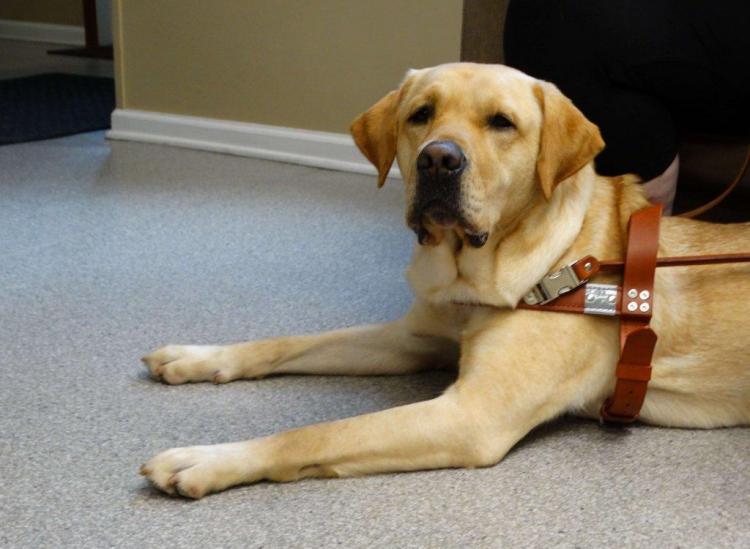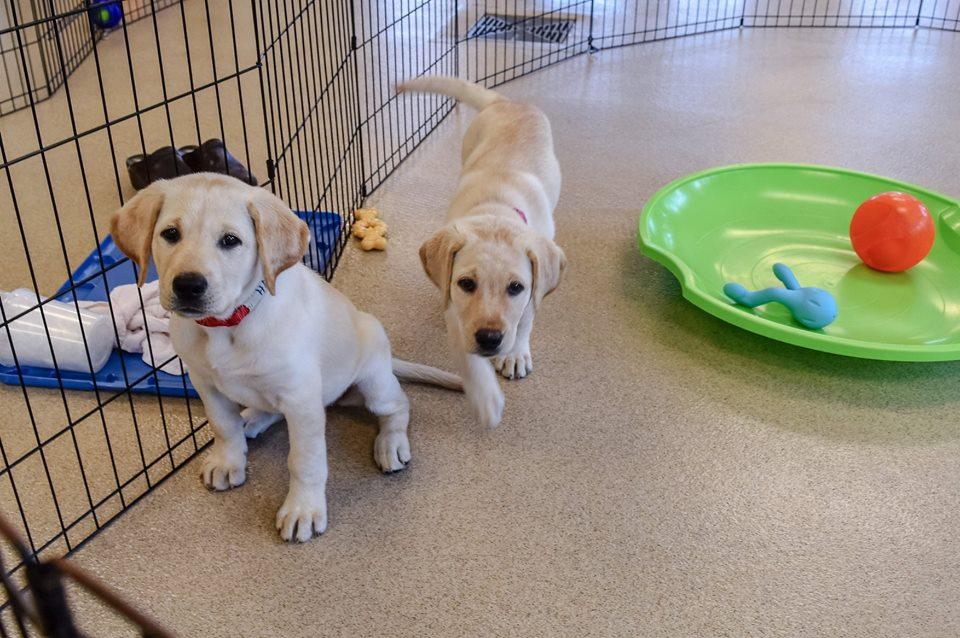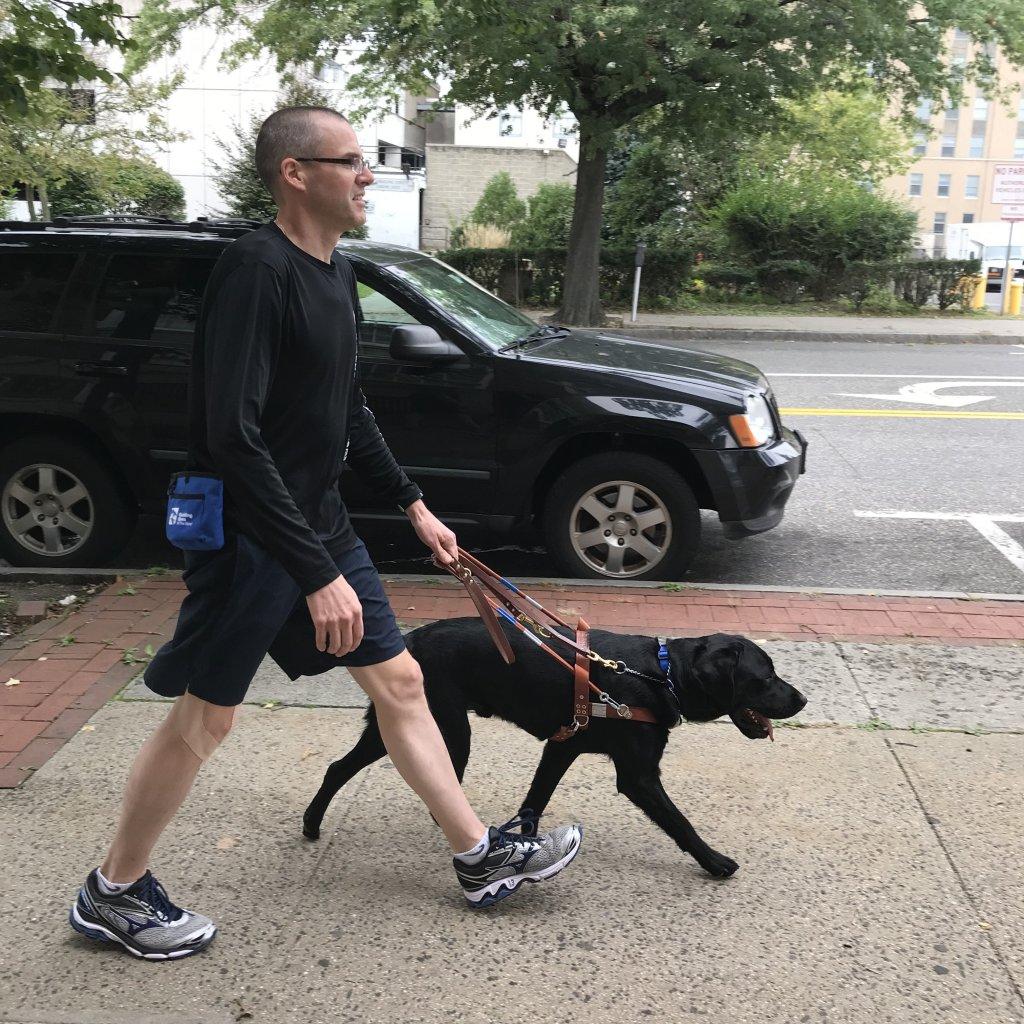This Is What It Takes To Be A Guide Dog For The Blind

Guide Eyes for the Blind
Dogs are our superheroes. Not only do they put smiles on our faces when we need it the most but they actively help us out when we face serious challenges. They’re our emotional support dogs when we lose our spirit and our guide dogs when we lose our sight. But not all pups are cut out to be working dogs. It takes a specific type of temperament and skill set to be a dog on duty.
At Guiding Eyes for the Blind, a nonprofit organization that provides guide dogs to people with vision loss, only slightly more than half of the pups that are bred and trained to become guide dogs end up making the cut. To get a sense of what it takes to be a guide dog and what type of training these pups need to go through, we spoke to Ben Cawley, director of Admissions and Graduate Relations at Guiding Eyes for the Blind. Here’s a little insight into the life of a guide dog in training.
The successful guide dog

Guiding Eyes for the Blind
According to Cawley, not all dog breeds make for successful guide dogs. A good guide dog must be “confident, well-socialized, focused and willing” to please, he said. For this reason, Guiding Eyes for the Blind favors Labrador Retrievers and German Shepherds for the job. Of all the pups that are bred and trained to become guide dogs by the organization, 92 percent are Labradors and eight percent are German Shepherds.
When looking for top-notch guide dogs amongst the pups that they train, the organization seeks out “dogs who enjoy being with people, learning new skills and that are friendly towards other dogs” said Cawley. What’s more, if trainers notice that a dog is no longer working in a confident and relaxed manner and doesn’t seem to enjoy the work that he or she is doing during formal training, they’ll suggest that the pup is taken out of the training program. Those dogs who are recognized as unsuitable for guide work are recruited for detection work, put into other service dog roles or placed in homes as family pets.
A day in the life of a guide dog in training
At Guiding Eyes for the Blind, pups spend six to 12 months undergoing formal training. Once they are done, those who successfully “graduate” (yes, these pups do have a formal graduation ceremony and yes, you can attend it) go on to meet their new owners — people suffering from vision loss that require assistance. During this formal training period, pups are taught various tasks that are meant to help them become better guides to their prospective owners.” Dogs are trained to stop and identify changes in elevation that might be a trip hazard [for their owners] such as curbs, stairs and large cracks in sidewalks,” said Cawley. Four-legged students learn how to bring their handlers around obstacles such as sign posts, benches and plants “while keeping track of the best line of travel available ahead,” Cawley said.

Guiding Eyes for the Blind
Guide dogs in training are also taught to be “intelligently disobedient” ignoring their owner’s command to move forward if a car or another dangerous object is in their path. During training, pups are introduced to this concept in the form of a game. When walking on the sidewalk, trainers will purposefully pretend to not notice a hazard such as a low-hanging branch or a construction barricade and tell the dog to proceed. If the pup refuses to go forward, he or she is rewarded with heavy praise and yummy treats. The dogs trained at Guiding Eyes for the Blind work hard so they deserve some time to play. That’s why their daily training lessons begin with a “romp in the play yard” with all of their doggie friends.
You can learn more about Guiding Eyes for the Blind and how you can contribute to the life of a guide dog by visiting their website.
Want more dogs in your life? Sign up for Friday Fluff, a newsletter featuring the week’s cutest pups!
RELATED
Dogs Are The Most Beloved Member Of The Family, Survey Reveals
Greyhound Races Were Banned In Florida. Here’s What That Means For The Dogs
9 Travel Dogs To Follow On Instagram For Some Warm Fuzzies In Your Feed











